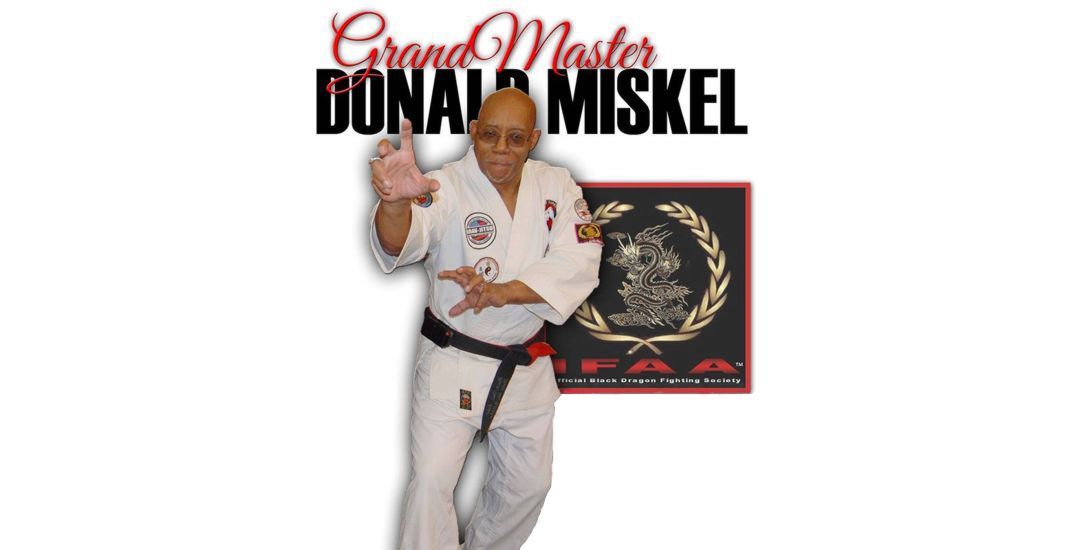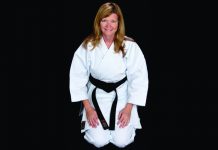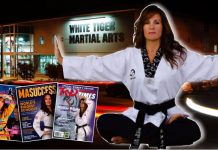In my very long involvement in the martial arts I have seen many trends come and go. Some were beneficial some less so. Even some of the passing trends left something of value behind as the faded into the netherworld of martial art trends past. Unfortunately some left only a bad taste in the mouth of any serious martial artist.
One of the less beneficial sides of the martial arts has to do with rank in martial arts, and how the ranking system relates to the western martial art community, its instructors and practitioners.
This year will mark my fifty eighth year of involvement in the martial arts. I began my training in 1957 and even earlier than that if I counted my father’s failed attempt to teach me some of the U.S. marine combat jiu jitsu that was prevalent before and during WW II. My father was an MP and spent much of his enlistment in Hawaii. Because of that, he had access to some of the martial arts that were popular on the islands at that time, as well as training in the hand to hand combat required by his job. He tried to teach me some of the hand to hand when I was really too young to understand what he was trying to do.
My first instructor was a lowly brown belt in judo and was an Inter Service Boxing Champion. Stationed on Okinawa he had some rudimentary understanding of the striking arts of that country though I suspect that what he taught us was a synthesis of western boxing and the atemi waza of jiu jitsu. My formal training began in 1959 when I began studying under the prevalent judo sensei in Chicago. In those days judo and jiu jitsu were the only eastern martial arts taught to occidentals in Chicago.
I remember when it took from 6 to 8 years to reach black belt level if a student was ever able to reach that coveted rank. Many students studied their entire life and never went beyond brown belt. Most of us considered a brown belt an expert at his art. The level of black belt was almost esoteric to most of us. In those days there were no colored belts other than the brown belt and we didn’t know anything about levels in the kyu or dan ranks. You were either a white, brown or black belts; no stripes, no degrees.
The belt ranking system as we know it was founded by Master Jigero Kano, the founder of Judo. When Master Gichen Funakoshi came to Japan he taught karate at the Kodakan, the home school of judo. He adapted Master Kano’s ranking system.
Judo came about as the feudal era of Japan drew to a close and the traditional fighting arts were frowned on and went the way of the samurai. The modern attitude of Japan no longer embraced the old ways and the combat oriented ways of the former days fell into disfavor. During that dire time for the fighting arts, Master Kano wanted to preserve the spirit, if not the intent, of Japan’s fighting arts and created Judo from several jitsus of the time. Instead of a jitsu or fighting system he presented it as a do or a way of self discovery and self improvement. The more dangerous techniques were eventually removed from the art as it began being taught in Japan’s school system. During the occupation period of Japan after WWII all other martial arts were forbidden by the occupying forces.
In that atmosphere Master Funakoshi followed Master Kano’s lead in how his art was presented to the public. The Shotokan karate that we know today was shaped and created because of the attitudes of Japan at the time and as it too began to be accepted in the public school system it went through changes to make it as much a physical education tool and a sport as a fighting art. Along with Master Kano’s philosophy concerning the martial arts Master Funikoshi also adapted the belt ranking system. In karate as taught in its home country of Okinawa there was no formal ranking system.
In the earlier days of Japanese martial arts there was no kyu or dan belt ranking system. They followed the menkyo system which certified an individual as a certain level of instructor up to Menkyo Kyedan. No belt was furnished with such certification to hold the pants up or the kimono closed. In each of the koryos or traditional martial art system there was only one master. Other than that there were only sensei(s) and students. There were no grandmasters, senior grandmaster or supreme grandmasters in those arts then or now. The cavalier use of the label of master and the concept of a grandmaster is simply a western concept.
Some of the traditional martial arts are still being practiced and taught in their pure state here in the U.S. but that has become more the exception than the rule. To a greater or lesser degree many or most of those arts have become somewhat eclectic in nature. America is a land of innovation. We take what we need from other countries and make it uniquely our own. Many of the martial arts that are taught in the U.S. today have become uniquely American arts in both form and function. I have always preached that martial arts evolve according to the needs and nature of the communities or countries they are practiced in. Those arts take on the flavor of the places where they are taught.
Many of the eastern arts have become eclectic enough as they are taught here to be recognized as new or different systems. As an old traditional martial artist that has changed with the demands of the passing years I can see no problem with that. Not as long as the synthesis of those arts are based on sound principles, are put together in a practical and useful manner and can be reproduced in the students of the founder. It has to be able to do what it was designed to do effectively if it is to have any practical and lasting value.
There are a few martial art prodigies that crop up through the years. Ed Parker, Bruce Lee and John Keehan come to mind as I speak. Each of these individuals became great martial artists, strong fighters and innovative teachers. Though none of them attained master level through their teachers each became a master in his own right. All three of these were low to mid level instructors but created organizations and systems that live on long after them. Unfortunately few of us, however creative we think we are, can claim to have created organizations and systems that will outlive us.
It seems that everyone who gets above sandan (third degree black belt) or its equivalent in other arts is creating his own system. In most cased unless an individual has reached about fifth degree or above and has experience in some other arts, he isn’t qualified to do what he’s trying to do. He has neither the foundation, understanding nor the experience to create a new art. However capable these individuals are they string together a few techniques, get a few followers, create a fledgling organization and crown themselves a grandmaster. Many have less than twenty years in the martial arts. A handful are just barely that old. The ranking game has evolved into a feeding frenzy and we have grandmasters and tenth degrees coming out of the woodwork.
With my years in the arts, my extensive experience, and whatever little innovative ability I may have, I am considered a grandmaster and am ranked a tenth degree in the American martial art community. These considerations were endowed upon me by my peers not self designated. I appreciate the recognition of my years of training, researching and teaching, but I take those designations with a grain of salt. I wouldn’t expect to go to Okinawa, Korea, Japan or China, present my rank certification to the ninth degree head of some traditional martial art and have him fall to his knees and kowtow to me. The rank I have is recognized only by my peers.
I have recently been given the position of Chief Examiner of the newly formed ‘Grandmasters Council’. The GMC was created to recognize reputable masters and grandmasters in the martial arts. In a day and age where authenticity is always in question the need for such an organization is sorely needed. The credentials and backgrounds of candidates are carefully examined before they are considered for inclusion. Such an organization can act as a clearing house for authentic, master level teachers and practitioners of the arts. I urge anyone who feels that they are qualified to explore the possibility of becoming a member. It will serve as a good way to authenticate your rank, system or organization with a responsible governing organization.
Many of you know me because of my long involvement in the martial arts, my many articles or as the Head of Family and a Patriarch of the Black Dragon Fighting Society and the co-founder and Senior Grandmaster of the Black Lotus Martial Art Association. Along with those positions I serve on the council or governing boards of several other organizations and serve as an advisor to others. I am a minister and pastor and I try to bring the integrity and transparency into my attitude and practice of the martial artist. I believe heavily in honesty, honor, humility, respect and equity in the martial arts. Brotherhood, caring and compassion must temper our martial ability to offset the lethal capabilities of the arts we practice, study and teach. Our focus should be more on growth and learning rather than rank and recognition. Rather than promoting ourselves let’s allow our lives and our life efforts to speak for us. Above all let’s be honest to ourselves and others. In the end all of us including the greatest supreme grandmaster are just a student. The day we stop learning is the day we stop living.
God bless you my martial art brethren and my friends, family and associates. Study hard and go with God.
Rev. Dr. Donald Miskel ThD, PhD, MDiv.






